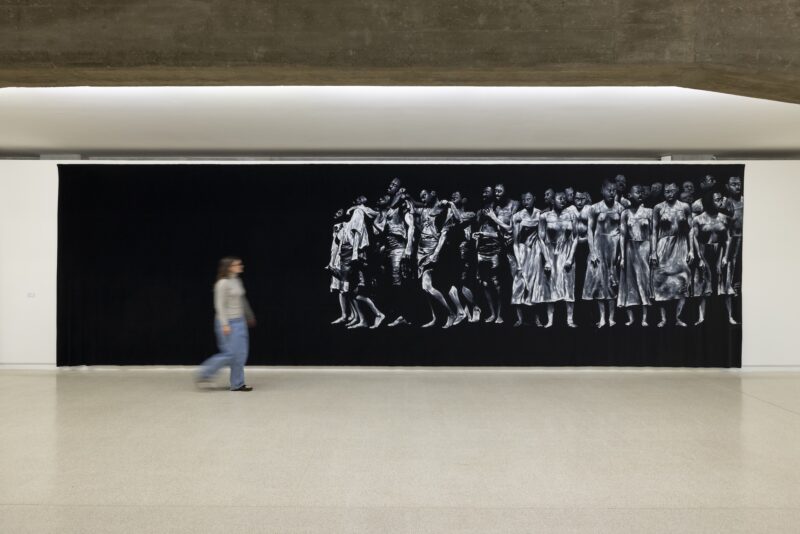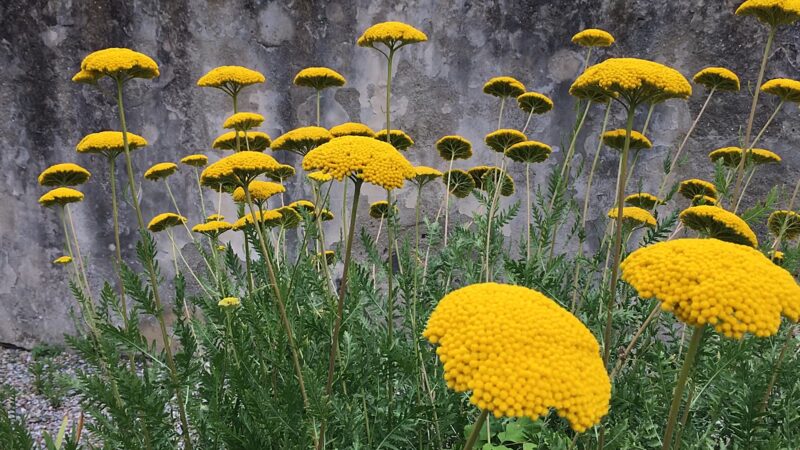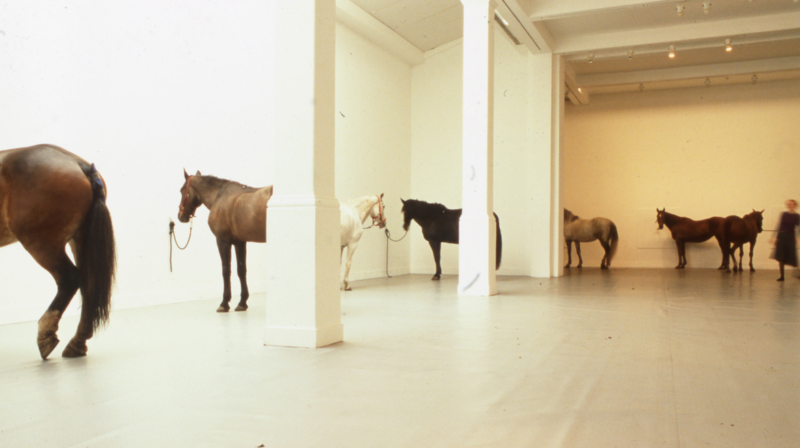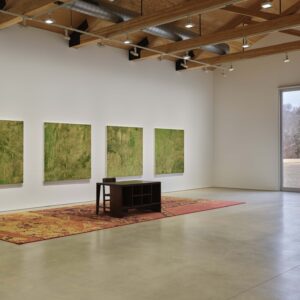Emma Talbot is the recipient of the 8th edition of the Max Mara Art Prize for Women, a biennial prize awarded to UK-based female artists who have not previously had a major solo show. Following a six-month residency around Italy, Talbot will premiere a new body of work challenging classical structures of power. It will go on show at the Whitechapel Gallery, London, on 30th June 2022, and then travel to Collezione Maramotti, Reggio Emilia (23rd October 2022 – 19th February 2023).
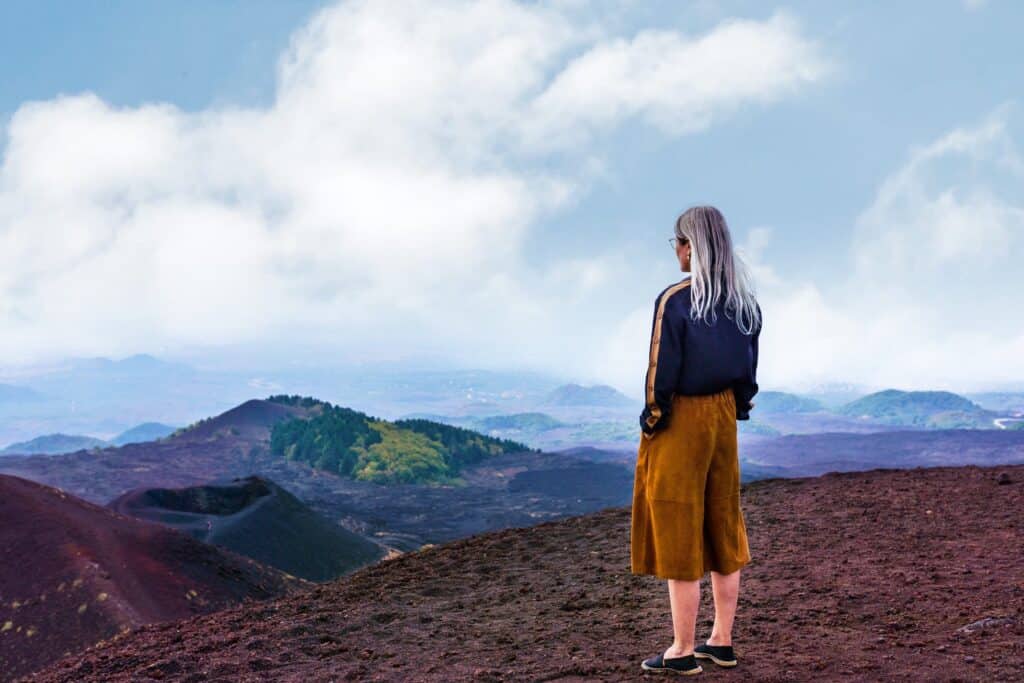
The exhibition revolves around the figure of an ageing woman who travels through the Trials of Hercules giving them a whole new interpretation. It will feature a new series of paintings on silk that mix together volatile landscapes with witty and poignant words and texts. There will also be a new sculpture representing the elderly woman, making of her wrinkled skin a powerful armour. Finally, Talbot will display an animation, offering an example of how the trials, as re-enacted by the elderly figure, can operate on our present. In the first part, the elderly woman asks herself who she is, what environment does she live in (a rotten, volatile one), and why she does what she does. Upon looking at classical statues (all male figures), she wonders: ‘is this what power looks like’?
I visited Talbot’s studio in Reggio Emilia, where we talked about her residency and the new narratives she’s been working on for her upcoming show. The artist was determined to challenge both the negative view often associated with ageing (in a youth maniac world), and the way politics increasingly use the classical white man as a symbol of power. Reinterpreting the Trials of Hercules, emblematic of this system, she replaced strength and deceit with nurture and respect. Her protagonist, long in years, faces modern-day destruction, from culture to ecology, and must find a way to survive sustainably.
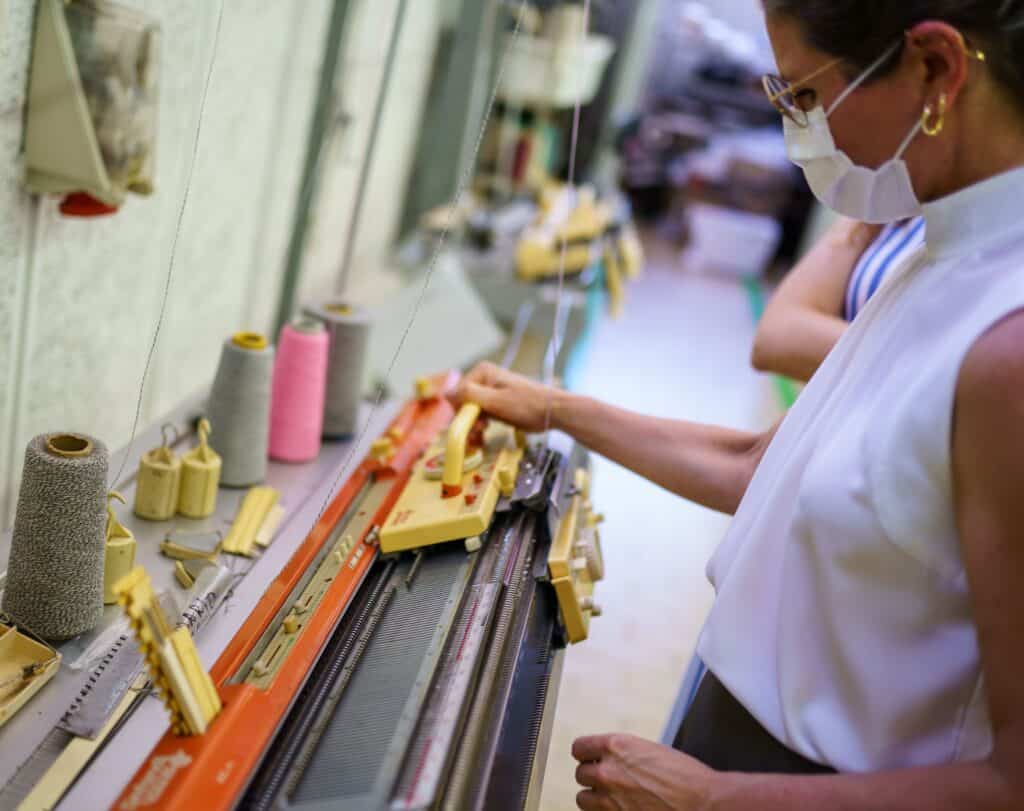
The work you will premiere at Whitechapel, and then at Collezione Maramotti, is the result of a bespoke residency that you spent between Sicily, Rome and Reggio Emilia. How did these cities influence you?
I was based in Reggio Emilia, where I developed the materiality of my work. I learned machine knitting [at Modateca Deanna] to create the surfaces of my 3D work and researched sustainable recycled materials to use wherever possible.
In Sicily, I was able to research ancient sites, such as the Temple of Hercules at Agrigento and sites of earthquakes such as Gibellina. These informed the landscape of ruins that the figure moves through in the large silk paintings. Then, I went to the Mount Etna which was extremely active at that time. It inspired my other painting, where the elderly woman tries to get through this volatile nature. There, I also learned about the principles of permaculture. This philosophy uses small, slow solutions, avoiding to produce any waste. It really goes along with my practice.
In Rome, I researched the imagery and representation of Hercules over centuries. I also investigated the graphic qualities of descriptions of the Trials of Hercules in Etruscan pottery to inform the language of my imagery.
All the places I visited were hugely informative, the residency was a really rich experience for me.
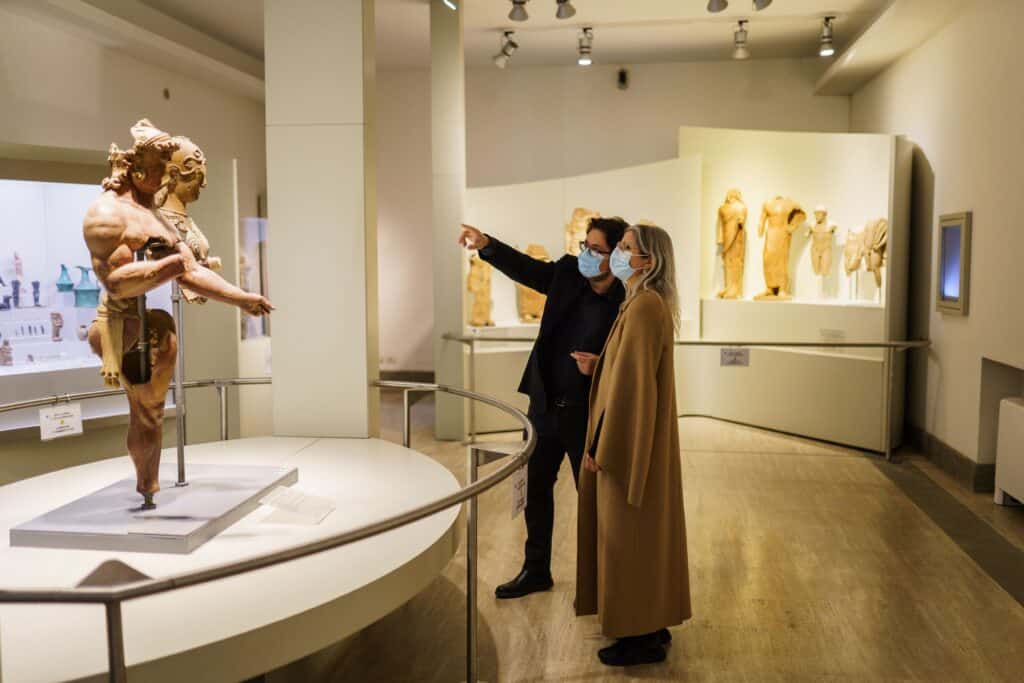
Why did you start from a myth?
I wanted to get deeper into the roots of our society, which is where we find the myth. In the UK the Classics are almost a given hierarchy that we still have to obey to. I wanted to question this, placing an elderly woman at the centre of my narrative and having her redo the Trials of Hercules. Yet, she would have to challenge these, to face them in a more considerate and respectful way. In this newly written story, respect, mutual help, and coexistence will replace violence and abuse of power.
Why did you rewrite an ancient myth instead of creating a whole new narrative that doesn’t have to start from something that had been written by and for a patriarchal structure?
I wanted to make a critique of the structures that allow a small group to retain authoritative power. I am addressing problems that exist in all our lives today. I am also responding to stories that we know already in a creative and alternative way. It is evident that the distribution of power really can be reimagined.
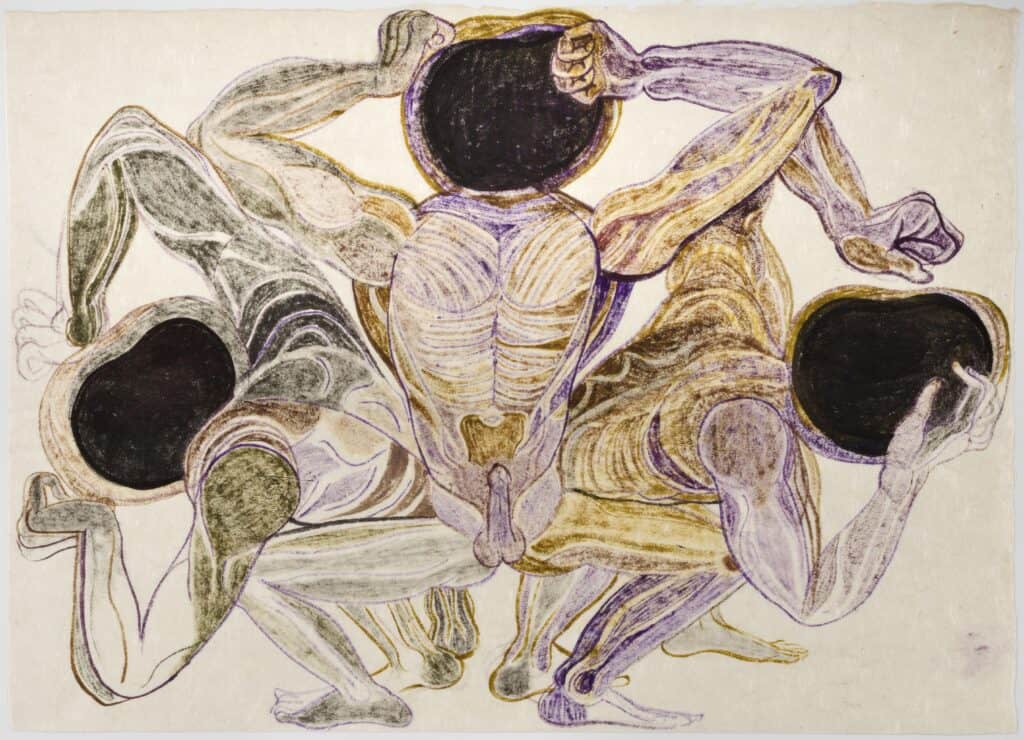
Where does the idea of the elderly woman come from?
The starting point for the elderly woman as a protagonist in my work was the painting ‘Three Ages of Woman’ by Gustav Klimt. It portrays a young woman with a baby and an elderly woman who stands totally naked with her head in her hands, as if in a state of shame. The elderly woman has hair like mine (long and grey) and I somehow identified with her as a future spectre. She is painted in such detail, you see the wrinkles and veins on her skin and her posture as if you are invited to look very objectively at her.
What fascinated or troubled you about this painting?
I thought it was really problematic that the elderly woman is envisaged as a figure who seems ashamed of her ageing. Furthermore, her identity is hidden (we can’t see her face) as if her existence isn’t celebrated. I wanted to take the figure and make her a protagonist in my work, to show her as someone with a lot of agency, capability and potential.
What role does she play in your narrative?
Albeit being naked and old, all elements which are often related to fragility and weakness, in my story she’s active and powerful. I started from the idea that we are all going to get old. It is also about how to accept this. But the figure that populates my narrative might also have to face the destruction of our world, rethinking the structures we live in.
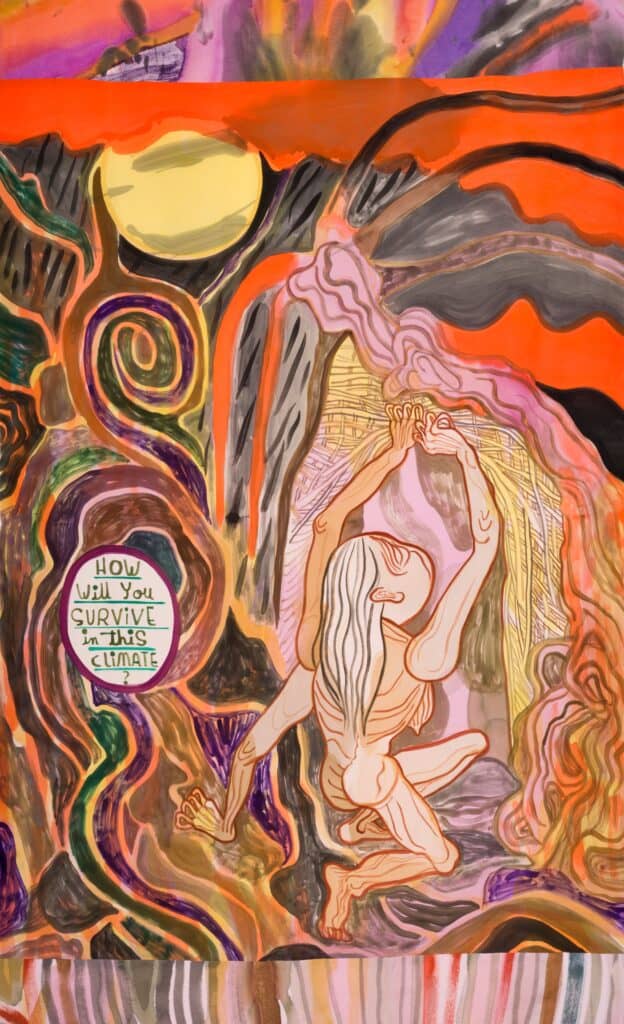
The National Gallery in Rome acquired the painting to celebrate 50 years of the unification of Italy. How does this event enter your story?
You can read the younger woman and the baby as the birth of a modern nation. The elderly woman, instead, represents old ways of living and connecting with nature, old belief systems that modernism eschews. I thought this was interesting for today, as we are returning to older practices to find sustainable ways of constructing our futures and in this respect, the figure of the elderly woman has something to teach us.
The woman in my work is connected to earth, nature, and ancient wisdom, all elements that modernity put aside. This idea of building and maintaining the ‘modern nation’ seems to be increasingly urgent, but it doesn’t come without a certain anxiety as well. I decided for this elderly woman to be a survivor that would find a way of living with nature in a sustainable way.
Are you afraid of ageing? Has this project been cathartic in any way?
I’m not afraid of ageing, in some ways I’m happier now than I have ever been, but I don’t like the idea of ageing as a negative, or the elderly as weak. I wanted to demonstrate that the wisdom that comes aging is a strength.
In many cultures, indeed, elderly people are held in high esteem, considered to be guardians of wisdom and knowledge. Think only of the many Mayan rituals making offerings to the ancestors to thank them for their wisdom. Have you thought of these cultures or ideas while researching and producing these works?
Yes, there are wonderful examples of the ways that the elderly have been respected and this is evident in Italian culture too. Here, I focused more about how power is attributed to a kind of hero figure, who is imagined as a classical (white) male, and the ways that modernism appropriated the idea of the classics as a demonstration of power.
There is an increase in right wing politics at the moment, which relies heavily in these types of rhetorics of power, which I don’t agree with. I wanted to use the narrative to form a contemporary critique. I intended to show that power can be put to different uses and that its redistribution would be beneficial in trying to create a sustainable and fairer future, using the 12 principles of permaculture.
I decided that the elderly woman would have to go to the roots of (Western) power to reorder structures that shape society. To demonstrate this, she would re-perform the Trials of Hercules – a series of trials that can be mapped onto contemporary situations.
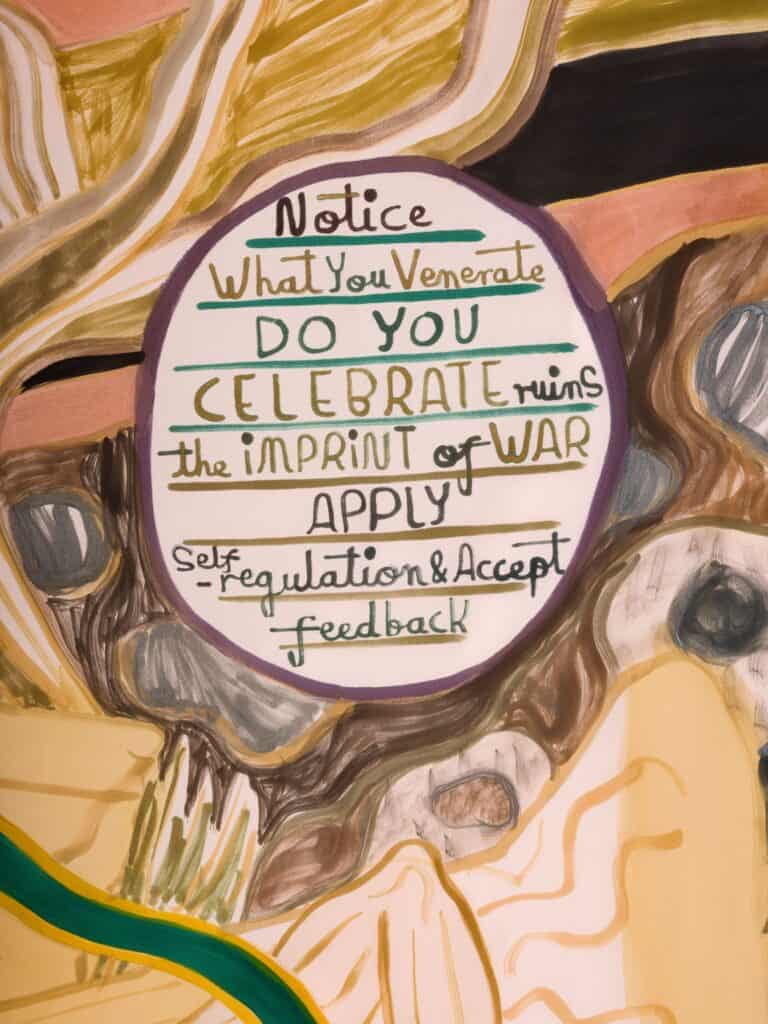
Let’s end with a few examples of how you reinterpreted some of these trials?
Hercules dealt with all the trials through acts of aggression – by killing, capture, theft and trickery. These never really resolve a systematic problem, they’re just expedient. I decided to interpret the trials through a contemporary lens, so that they represented current issues – but proposed that the elderly woman would try to resolve them or unravel them using more wise, caring and considered methods.
An example can be the VI trial, The Stymphalian Birds. It tells about a flock of birds that forcefully migrated to another land. Since they troubled the local hunters, Hercules set to killing them, only after tricking them. The othering of migrants and the disassociation that accompanies such mind-sets has long been in human history. The elderly woman doesn’t believe that one group or another have more rights over territory. She believes resources and terrain can be shared. She doesn’t think migration is an easy act, especially when displacement occurs through untenable threat. She can see that the Stymphalian Birds are defensive and aggressive because they are threatened. By enabling a peaceful space for them to thrive alongside others, the elderly woman builds accord and positive coexistence amongst diverse beings.
Or think of the V trial, The Augean Stables. The Augean Stables was a filthy place, which hadn’t been cleaned for thirty years. To wash it, and do it quickly, Hercules diverted a river to flow through them, a typical expedient of his that focuses on short-term actions. This only diverts the problem without considering the long-term impact, or the effect of displacements he caused. Like many patriarchs and false heroes, he just wanted to ‘get things done’ in the most immediate but careless way, without being responsible for the consequences.
The elderly woman walks through the stables of today, a shitty landscape of all the domestic spaces where we live and work, filthy with their reliance on fossil fuels. She despairs at the systems that keep us dependent on these dirty, polluting fuels – which will eventually lead to our own demise. She asks why, digging down into the shit to find the dirty practices -corrupt political and capital systems – that stoke our dependency. Buried in the terrain of war, the woman tries to demonstrate that moving to renewable energy with urgency could clean our stables in the long term.
Emma Talbot, The Age/L’Età
Max Mara Art Prize for Women: Emma Talbot
Whitechapel Gallery: 30 June – 4 September 2022
Collezione Maramotti: 23 October 2022 – 19 February 2023
